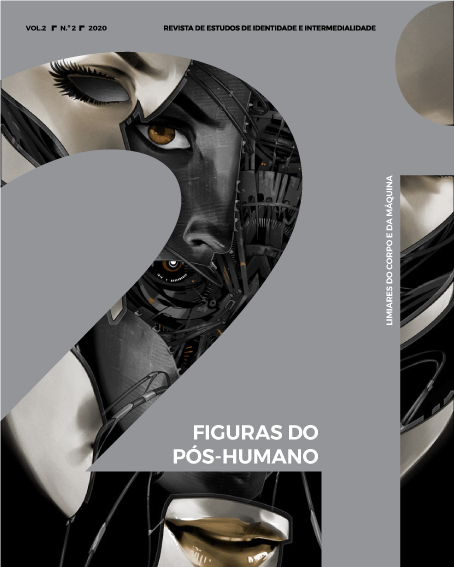Refutation of time, praise of eternity
“The invention of Morel” (1940) by Adolfo Bioy Casares and Solaris (1972) by Andrei Tarkovski
DOI:
https://doi.org/10.21814/2i.2684Keywords:
Adolfo Bioy Casares, Andrei Tarkovski, Posthumanism, Body, Transhumanism, Transgression of boundariesAbstract
For transhumanist ideology, one of the discourses that can be associated with post-humanism, time, its passage and its consequences for human life are presented as a problem, as an obstacle to reaching the horizon of immortality. In the novel The Invention of Morel (1940) by Adolfo Bioy Casares and in the film Solaris (1972) by Andrei Tarkovski, two male characters are radically isolated, one lost on an island, the other on a distant planet. Thanks to technical or metaphysical devices (a complex machine in the novel and the materialization of ideas in the film), the two men come into contact with women who no longer exist. Morel’s technical invention and the natural - but unknown and incomprehensible - force of the planet Solaris, generate new forms of existence, human bodies beyond their conventional borders. These bodies, as post-human presences, operate a suppression of distances, nullify the distant and replace it with the near, and imply both a refutation of time and a eulogy of eternity. This article seeks to identify the characterization of these phenomena of spatio-temporal approach and study their forms of representation, literary and cinematographic.Downloads
References
Bacon, Francis. (1627). New Atlantis. Londres.
Besnier, Jean-Michel. (2015). “Posthumain”, in Hottois, Gilbert, Jean-Noel Missa y Laurence Perbal (dir.). L’humain et ses préfixes. Encyclopédie du transhumanisme et du posthumanisme. París: Librairie Philosophique J. Vrin.
Bioy Casares, Adolfo. (2018 [1940]). La invención de Morel, in La invención de Morel – El gran Serafín. Madrid: Cátedra.
Cervantes, Miguel de. (1999 [1616]). Don Quijote de la Mancha. Barcelona: Instituto Cervantes – Crítica.
Esfandiary, Fereidoun M. (1989). Are You a Transhuman?: Monitoring and Stimulating Your Personal Rate of Growth in a Rapidly Changing World. New York: Warner Books.
Greco, Emidio. (1976). L’Invenzione di Morel. Italia, Alga Cinematografica et. al., 110 min.
Huxley, Aldous. (1932). Brave New World. Londres: Chatto and Windus.
Huxley, Julien. (1957). New Bottles for New Wine, Londres: Chatto and Windus.
Kenton, Erle C. (1932). Island of Lost Souls. Estados Unidos, Paramount Pictures, 70 min.
Kepler Johaness. (1634). Somnium.
Lem, Stanislas. (1970 [1961]). Solaris. New York: Mon.
More, Thomas. (1516). De optimo rei publicæ statu, deque nova insula Utopia. Países Bajos: More.
Mozart, Wolfgang Amadeus. (1791). Die Zauberflöte. Viena.
Resnais, Alan. (1961). L’Année dernière à Marienbad. Francia, Argos et. al., 94 min.
Shelley, Mary. (1818). Frankenstein; or, The Modern Prometheus. Londres: Lackington, Hughes, Harding, Mavor & Jones.
Sloterdijk, Peter. (2006 [1999]). Normas para el parque humano. Una respuesta a la Carta sobre el humanismo de Heidegger [traducido del alemán (Regeln für den Menschenpark. Ein Antwortschreiben zu Heideggers Brief über den Humanismus) por Teresa Rocha Barco]. Madrid: Siruela.
Tarkovski, Andréi. (1972). Solaris. URSS, Mosfilm, 144 min.
Wells, H. G. (1896). The Island of Doctor Moreau. Londres: Heinemann.
Wilde, Oscar, (1890). The Picture of Dorian Gray. Londres: Lippincott’s Monthly Magazine.
Downloads
Published
Versions
- 2020-12-03 (2)
- 2021-05-04 (1)
How to Cite
Issue
Section
License
Copyright (c) 2020 Carlos Tello

This work is licensed under a Creative Commons Attribution-NonCommercial 4.0 International License.


.jpg)










